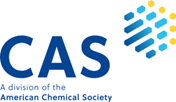HEPATOPROTECTIVE EFFECTS OF GLYCYRRHIZ GLABRA AND CICORIUM INTYBUS IN PARACETAMOL INDUCED TOXICITY IN RATTUS NORVEGICUS
Hepatoprotective Effects of Glycyrrhiza and Cichorium in Rats
DOI:
https://doi.org/10.69750/dmls.01.01.010Keywords:
Hepatoprotective effects, Glycyrrhiza glabra, Cichorium intybus, paracetamol-induced toxicity, Rattus norvegicus, liver dysfunction, medicinal plants, antioxidative properties, detoxification, anti-inflammatory, liver tonic.Abstract
Aims and Objectives:The present study was aimed to determine hepatoprotective role of two plants Glycyrrhiza glabra and Cicorium intybus against paracetamol (acetaminophen) exposure hepatotoxicity in albino rats (Rattus norvegicus). It has been demonstrated that G. glabra and C.intybus extract has biological capabilities of anti-oxidation, detoxification and anti-infection.
Methodology:So, to evaluate the effects of G. glabra and C.intyubs administration on the liver’s histology and some biochemical parameters were investigated. Rattus norvegicus male rats (n= 48) were randomly distributed into four groups. Experimental groups were given acetaminophen with 2.5mg/kg BW /day for 5 days respectively to induce hepatotoxicity, then aqueous extract of G. glabra (Roots) and C.intybus (Seeds) at 200 mg/kg/day was given for a period of 10, 20 and 30 days. After the completion of experiment, tissues were taken and blood was collected in order to evaluate histopathological changes, and for studies of biochemical parameters separately. The obtained results showed hepatic necrosis and centrilobular hepatic congestion with a decrease in hepatocytes diameter, and increase in sinusoidal spaces was also observed in the liver of treated rats.
Results:Liver enzymes ALP, AST and ALT and other biochemical factors Albumin, Bilirubin showed a significant increase in 200 mg/kg extract received rats in comparison with control (P<0.05) and (P<0.01). G.glabra and C.intybus have shown a remarkable and effective impact on RLW which was statistically significant (P<0.05), percentage increase and decrease showed that both plants have good effective on the recovery of body weight, affected by the paracetamol (acetaminophen ) toxicity.Some harmful effects of C.intybus were seen on integrity of liver in 30 days consumption of this plant.
Downloads
References
Ali Louei Monfared (2013) Biochemical and Histomorphometric Studies on the Liver Rats Administrated With Glycyrrhiza glabra Extracts Advances in Biological Research 7 (2): 67-71
Akao T, Hattori M, Kanaoka M, Yamamoto K, Namba T, Kobashi K (1991) Hydrolysis of glycyrrhizin to 18 beta-glycyrrhetyl monoglucuronide by lysosomal beta-D-glucuronidase of animal livers. Biochem Pharmacol 1991 Mar 15 Apr 1;41 (6-7): 1025-9
Bunchorntavakul C, Reddy KR. Acetaminophen-related hepatotoxicity. Clin Liver Dis 2013;17:587–607.
Naruse K, Tang W, Makuuchi M (2007) Artificial and bioartificial liver support: A review of perfusion treatment for hepatic failure patients. World J Gastroenterol 13: 1516-1521
Navarro VJ, senior JR(2006) Drug- related hepatotoxicity , N. Engl JMed 354:731-739.
Papay JI, Clines D, Rafi R, Yuen N, Britt SD, et al. (2009) Drug-induced liver injury following positive drug rechallenge. Regul Toxicol Pharmacol 54: 84-90
Willett KL, Roth RA, Walker L (2004) Workshop overview: hepatotoxicity assessment for botanical dietary supplements. Toxicol Sci 79: 4-9.
Foye WO, Lemke TL, Williams DA (1995) Principles of medicinal Chemistry. (4th Edition) Williams & Wilkins pp: 544–545.
Gelotte CK, Auiler JF, Lynch JM, Temple AR, Slattery JT (2007) Disposition of acetaminophen at 4, 6, and 8 g/day for 3 days in healthy young adults. Clin Pharmacol Ther 81:840-848.
Shibata, S.A., 2003. Drug over the millennia: pharmacognosy, chemistry and pharmacology of G. glabra. J. Pharm. Soc. Japan, 120: 849-862.
Konrad, L., Muller, H.H,. Lenz, C., Laubinger, H., Aumuller, G. and Lichius, J.J. (2000). Antiproliferative effect on human prostate cancer cells stinging nettle root (Urtica dioica) extract. Planta Medica, 66: 44-47.
Mohamed Marzouk*, Amany A. Sayed and Amel M. Soliman (2011) Hepatoprotective and antioxidant effects of Cichorium endivia L. leaves extract against acetaminophen toxicity on rats Journal of Medicine and Medical Sciences Vol. 2(12) pp. 1273-1279,
Ostapowicz GA, Fontana RJ, Schiodt FV, Larson A, Davern TJ, Han SBH et al. Results of a prospective study of acute liver failure at 17 tertiary care centers in the United States. Ann Intern Med 2002;137:945–54.
Clark, M. L. and Kumar, P. J. (2001). Liver biliary tract and pancreatic diseases. Clinical Medicine, 4th ed. Harcourt Publishers Limited, London.
Li, G.Y.; Gao, H.Y.; Huang, J.; Lu, J.; Gu, J.K.; Wang, J.H. Hepatoprotective effect of Cichorium intybus L., a traditional Uighur medicine, against carbon tetrachloride-induced hepatic ibrosis in rats. World J. Gastroenterol. 2014, 16, 4753–4760.
Jaeschke (2015) Acetaminophen - Dose-dependent Drug Hepatotoxicity and Acute Liver Failure in Patients. Dig Dis, 33(4): 464–471
Sohn EJ, Kang DG, Lee HS. (2003). Protective effects of glycyrrhizin on gentamicin-induced acute renal failure in rats. Pharmacol Toxicol 2003 Sep;93(3):116-22
Kennon Heard , Jody. L Green, Victoria Anderson, Becki Buncher-Bartelson and Richaed C. Dart (2015), Br J clin Pharmacol, 81: 3 / 562-568.






















